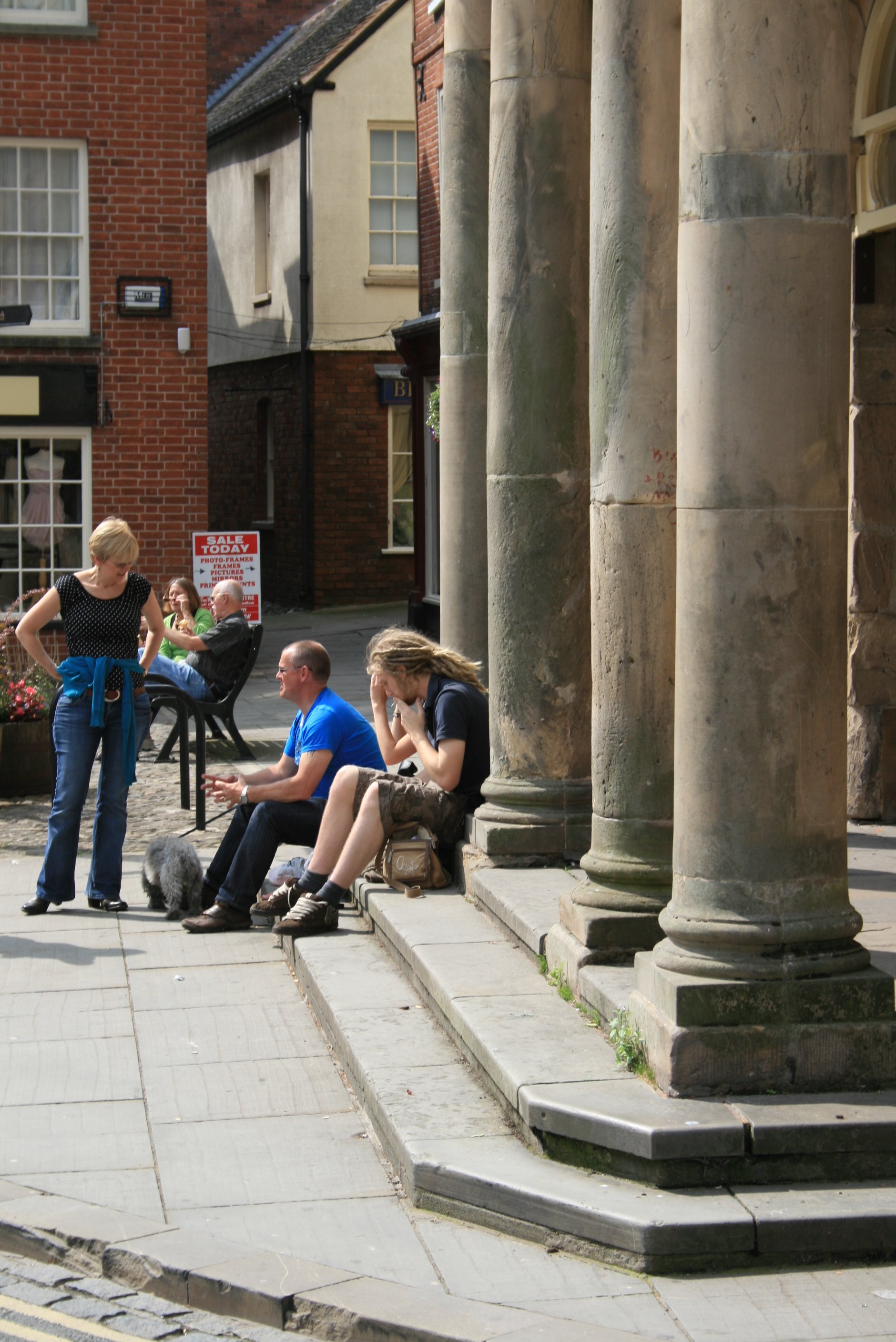Public spaces and events
Surrounded by buildings and at the meeting point of important streets, public squares and market streets have traditionally been the social heart of our towns, and in many cases continue to be today. However, the competing demands of car movement, parking, pedestrians, shops, cafés, monuments, seating and planting can, in some instances, lead to confusing and contradictory spaces. Spaces that encourage what urbanist Jan Gehl calls “Life Between Buildings”[1], accidental meeting, café seating, animation and shopping, create economic benefits and reinforce community spirit.
Identify the most important public spaces in your place- these are the places that are likely to host markets, festivals, events, or the local Christmas tree and are the centre of local life. Consider how they are used at different times of the day, week, month and year: what events take place and how often? How many people come to them? Do public spaces feel like the heart of your place?
Watch where you’re walking! Have a look down at the surfaces of the streets, paths and pavements. What are they made of? Are they in good condition? Use of one surface material throughout can unify a place, while different materials can be used to identify crossing points, vehicle routes and cycle paths. Maintenance is important in ensuring a quality environment people enjoy. Poorly looked after surfaces with broken paving, litter, potholes, drainage, chewing gum or weeds can have a negative effect on the sense of place. Items of street furniture, benches, planters, bollards, bins, signs and so forth, are minor elements that contribute to how your place looks and feels. Where they are placed and how well they are maintained are important considerations.
Questions to consider
Does your place have a main square or village green, a key high street or a series of different public spaces? How are they used throughout the year?
What features make up the spaces – for example monuments, trees, water, paving, parking, signs, bus stops or benches?
How well designed are the streets and spaces? How welcoming are they for people of different ages and abilities?
What materials are used in these spaces? Are they used consistently, or does it vary?
Are paths safe and comfortable to use for all users? Are the public spaces enjoyable to spend time in? Do people feel safe?
What condition are the surfaces and items of street furniture in?
Does the space look cluttered?
-
• How can we make spaces for all? Make Space for Girls
• Designing places for play: a guide to creating successful play spaces
[1] Gehl, Jan. Life Between Buildings : Using Public Space. Third edition. Copenhagen: Arkitektens Forlag, 1996

